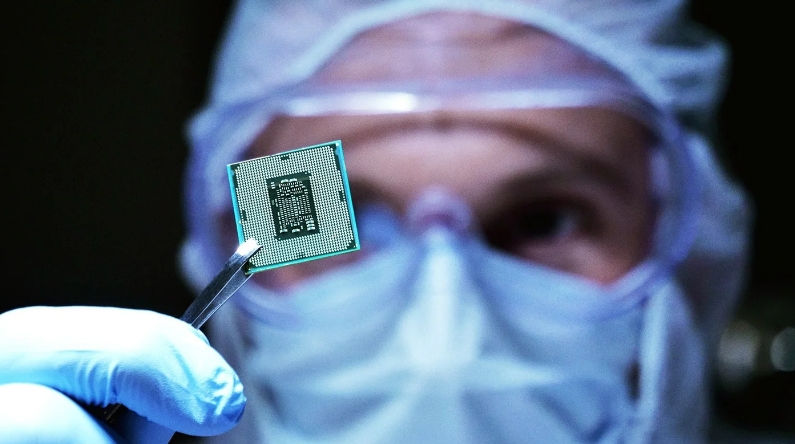The electronics industry is on a constant trajectory toward innovation, where the use of Ultra High-Density Interconnect (UHDI) PCBs is setting new paradigms in the design and functionality of modern electronic devices. These substrate-like PCBs are reshaping the boundaries of high-density circuitry, offering unprecedented intricacy and efficiency in PCB design and function.

According to industry expert Tara Dunn, as reported in a 2023 tech magazine issue, the progression of PCB manufacturing processes has been significantly marked by the introduction of Ultra HDI PCBs. These advanced circuit boards stand at the pinnacle of PCB innovation, delivering on the consumer's ever-increasing expectation for sleeker, high-performance electronics.
High-density interconnect PCBs, particularly the Ultra HDI variant, leverage existing HDI board technology as a springboard to further condense interconnects, meeting the modern market's demands for miniaturization without compromising performance. With companies like American Standard Circuits (ASC) at the helm, the industry is witnessing a revolution in how circuit boards are crafted. ASC’s involvement showcases a strong commitment to maintaining high-quality American standards while leading the charge in Ultra HDI PCB production.
The essence of Ultra HDI PCB's success lies in its miniaturization capabilities—allowing greater functionality within reduced space constraints—coupled with superior electrical performance. These boards boast smaller vias, finer lines, and increased pad density compared to conventional PCBs. Significantly shortened electrical paths facilitate faster signal transmission and diminish problems such as signal latency and cross-talk, thus enhancing the overall device performance.
Adopting substrate-like materials similar to advanced IC packaging, Ultra HDI PCBs are not only about reducing PCB size but also about improving reliability and performance at an unprecedented scale. The transition to this advanced form of PCBs is non-trivial; manufacturers face huge challenges in meeting strict requirements regarding materials, trace widths, sizes, and layer counts.
This step up in PCB production demands a fusion of deep expertise, meticulous precision, and advanced technology, a challenge that ASC and others in the field are managing to navigate with increasing efficiency. The development and reliable integration of these sophisticated Ultra HDI PCBs are therefore seen as a significant leap forward for the electronic industry's capabilities.
The insights provided by authorities like Tara Dunn are invaluable in understanding and harnessing the potential of Ultra HDI PCBs. Their analyses help guide industry professionals in the direction of further research, innovation, and developmental efforts that are necessary for staying at the forefront of technological advancement.
Ultra HDI PCBs are more than a passing trend; they represent a substantial advancement in PCB technology. These boards are essential in molding the future of electronics—enabling the creation of devices that are not only more compact but also superior in performance. As the collaborative effort between industry leaders, PCB manufacturers, and designers continues, there is no doubt that Ultra HDI PCBs will evolve into even more sophisticated and transformative components, setting the tone for tomorrow's electronics innovation.
Continuing to push the boundaries of what is possible, the future of Ultra HDI PCBs is bound to be as dynamic as the technology itself. The drive to innovate within the paradigm of these high-performance boards will not only reshape the devices of tomorrow but also redefine the entire approach to electronic component design.
Engineers and designers working with Ultra HDI PCBs must operate within a highly specialized set of design rules that govern trace widths, space tolerances, via sizes, and overall layer structures. These PCB design rules have expanded to accommodate the intricate needs of Ultra HDI boards, establishing a more complex framework that goes hand in hand with the drive towards efficiency and miniaturization.
Industry working groups have become essential in this evolving landscape, serving as a nexus where ideas, challenges, and advancements are shared and developed collectively. This collaborative environment ensures that as the technology progresses, the designs and uses of Ultra HDI PCBs keep pace with the evolving demands of highly advanced electronic devices.
American Standard Circuits (ASC) not only adapts to these changes but also influences the direction in which these norms evolve. As a leader in the manufacture and delivery of Ultra HDI PCBs, ASC consistently sets a high bar for what can be achieved, bringing cutting-edge products that meet the stringent requirements for materials and design specificity.
The symbiotic relationship between ASC and the rest of the electronics manufacturing sector is a testament to the collective ambition to see these high-density circuit boards fulfill their potential. With Ultra HDI PCBs, electronics designers are no longer confined by the physical limitations that once restrained innovation. Instead, they have the freedom to reimagine how devices are engineered, ultimately leading to the creation of products that were once thought to be unattainable.
In summary, the relentless progression of Ultra HDI technology continues to be an influential force within the electronics industry. With advancements in substrate-like PCBs, strict adherence to design rules, and the collaborative efforts of manufacturer working groups, Ultra HDI PCBs have cemented their role as a cornerstone of modern electronic design. As we look towards the future, it’s clear that these circuit boards will play a pivotal role in driving forward the next wave of electronic innovation, making them an integral feature of the advanced devices that will define our digital age.